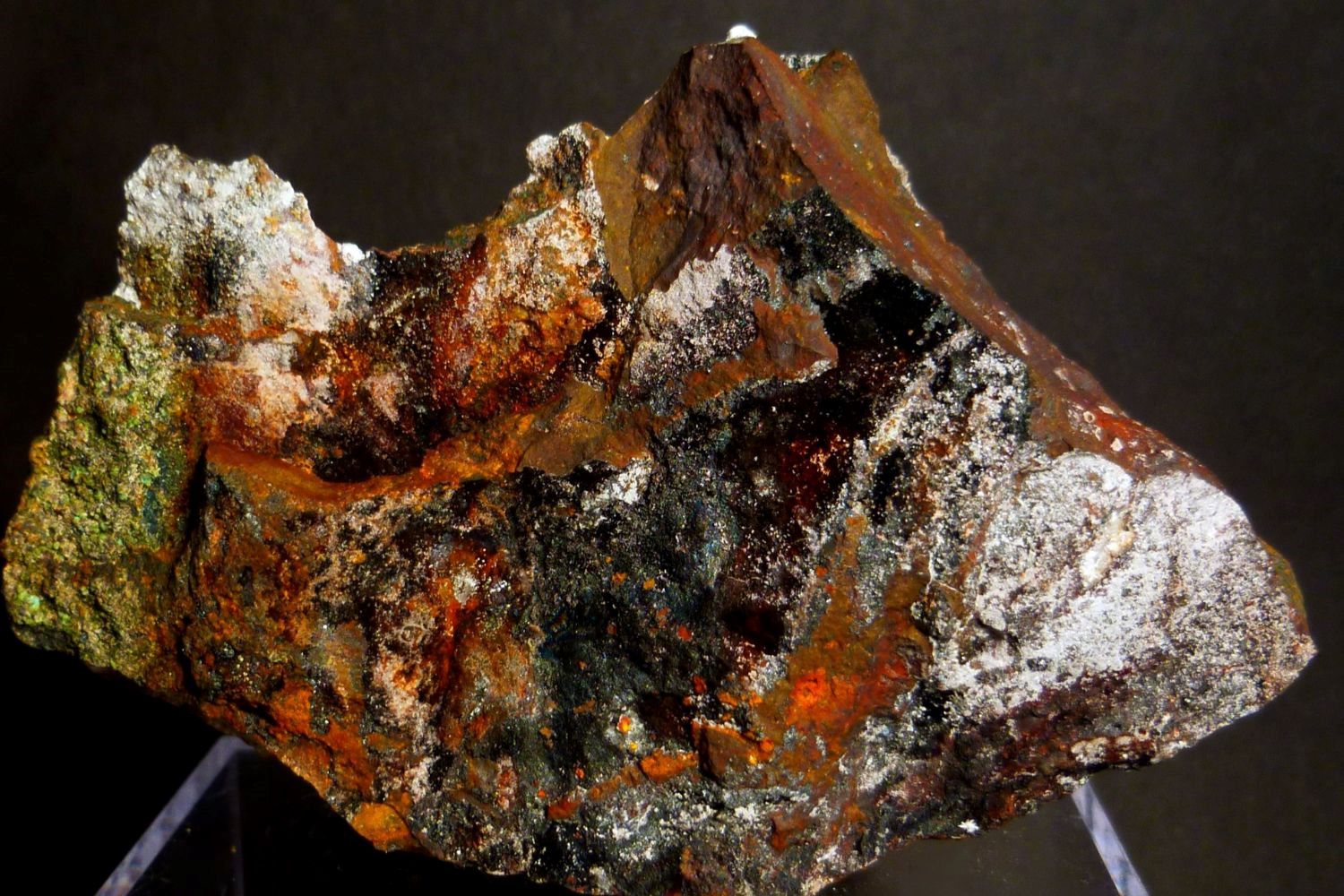
Lipscombite is a fascinating mineral that often catches the eye of geologists and collectors alike. Named after the American mineralogist Frank Lipscomb, this mineral boasts a unique composition and striking appearance. Found primarily in phosphate-rich environments, lipscombite typically forms in oxidized zones of ore deposits. Its vibrant green to blue-green hues make it a standout in any collection. But what exactly makes lipscombite so special? From its chemical structure to its formation process, there are numerous intriguing aspects to explore. Whether you're a seasoned mineral enthusiast or just curious about the natural world, these 30 facts about lipscombite will surely pique your interest and deepen your appreciation for this remarkable mineral.
Key Takeaways:
- Lipscombite is a rare and fascinating mineral named after a Nobel Prize-winning chemist. It has unique physical properties and is often found in phosphate-rich deposits, making it a prized collector's item.
- This mineral, while not widely used in industry, has interesting features like pleochroism and fluorescence. It's valued by collectors and used in geological research, making it a special and sought-after mineral.
What is Lipscombite?
Lipscombite is a rare phosphate mineral named after the American chemist William Lipscomb. It has a unique composition and fascinating properties that make it a subject of interest for mineralogists and collectors alike. Let's dive into some intriguing facts about this mineral.
-
Lipscombite was first discovered in 1960 in the United States.
-
The mineral is named after William Nunn Lipscomb Jr., a Nobel Prize-winning chemist.
-
Lipscombite has a chemical formula of Fe2+Fe3+2(PO4)2(OH)2.
-
It belongs to the phosphate mineral group, which includes minerals containing the phosphate anion (PO4).
-
Lipscombite typically forms in oxidized zones of phosphate-rich deposits.
-
The mineral is often found in association with other phosphates like variscite and strengite.
Physical Properties of Lipscombite
Understanding the physical properties of Lipscombite can help identify it in the field. These properties include color, hardness, and crystal structure.
-
Lipscombite usually appears in shades of green, blue-green, or brown.
-
It has a vitreous to dull luster, giving it a glassy or slightly matte appearance.
-
The mineral has a Mohs hardness of 4 to 5, making it relatively soft.
-
Lipscombite crystals are typically orthorhombic, meaning they have three mutually perpendicular axes of different lengths.
-
It often forms prismatic or tabular crystals, which are elongated or flat in shape.
-
Lipscombite has a specific gravity of about 3.6, indicating it is denser than many common minerals.
Occurrence and Locations
Lipscombite is not found everywhere. Its occurrence is limited to specific geological environments and regions.
-
Lipscombite was first discovered in the Tip Top mine in Custer County, South Dakota.
-
Significant deposits have also been found in Portugal and Australia.
-
The mineral is typically found in phosphate-rich pegmatites, which are coarse-grained igneous rocks.
-
Lipscombite can also occur in sedimentary phosphate deposits, formed from the accumulation of phosphate minerals in sedimentary rocks.
-
It is often found in oxidized zones, where chemical weathering has altered primary minerals.
Uses and Applications
While Lipscombite is not widely used in industry, it has some specific applications and is highly valued by collectors.
-
Lipscombite is primarily a collector's mineral, prized for its rarity and unique properties.
-
It is sometimes used in geological research to study phosphate mineralization processes.
-
Lipscombite specimens are often displayed in museums and private collections due to their aesthetic appeal.
Interesting Facts
There are some lesser-known but fascinating aspects of Lipscombite that make it even more intriguing.
-
Lipscombite can exhibit pleochroism, meaning it shows different colors when viewed from different angles.
-
The mineral can sometimes be found in botryoidal forms, which resemble a bunch of grapes.
-
Lipscombite is often associated with secondary minerals, formed from the alteration of primary minerals.
-
It can fluoresce under ultraviolet light, emitting a weak glow.
-
Lipscombite is relatively stable, but it can alter to other minerals like strengite under certain conditions.
-
The mineral's name honors William Lipscomb's contributions to chemistry, particularly his work on the structure of boranes.
-
Lipscombite is not radioactive, making it safe to handle and store.
-
The mineral can be synthesized in the lab, but natural specimens are much more valued.
-
Lipscombite has a distinctive streak color, which is typically white or pale green.
-
It is often used in educational settings to teach students about phosphate minerals and crystallography.
Final Thoughts on Lipscombite
Lipscombite, a rare phosphate mineral, offers a fascinating glimpse into the world of geology. Found mainly in phosphate-rich environments, it boasts a unique greenish-blue hue that makes it stand out. This mineral, named after geologist Frank Lipscomb, has a distinct crystal structure and is often associated with other minerals like variscite and wavellite.
Understanding lipscombite's properties can help collectors and geologists identify it in the field. Its rarity and unique characteristics make it a prized find for mineral enthusiasts. Whether you're a seasoned geologist or just starting out, knowing these facts about lipscombite can deepen your appreciation for the natural world.
So next time you're out exploring, keep an eye out for this intriguing mineral. You never know when you might stumble upon a piece of geological history. Happy hunting!
Frequently Asked Questions
Was this page helpful?
Our commitment to delivering trustworthy and engaging content is at the heart of what we do. Each fact on our site is contributed by real users like you, bringing a wealth of diverse insights and information. To ensure the highest standards of accuracy and reliability, our dedicated editors meticulously review each submission. This process guarantees that the facts we share are not only fascinating but also credible. Trust in our commitment to quality and authenticity as you explore and learn with us.
